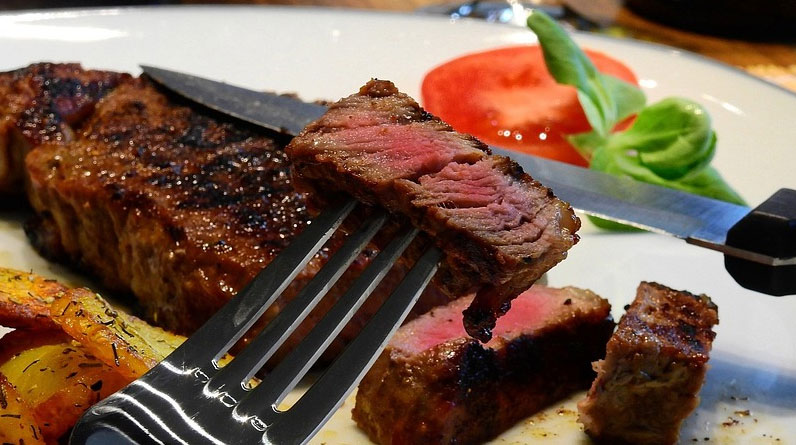
Understanding The Paleo Diet
The paleo diet is one of the most popular diets today. Originating from the Paleolithic period, this diet focuses on eating whole and unprocessed foods as a way to reduce risk of chronic diseases like obesity, diabetes, and hypertension.
The paleo diet consists mainly of fish, meat, eggs, fruits, nuts, seeds, and non-starchy vegetables. In general, it prohibits foods that can be classified as grains (such as rice and wheat), beans or legumes (like soybeans or peas), dairy products (such as milk and yogurt), or sugars (such as honey).
The benefits of this restrictive diet are numerous: an increased intake of vitamins and minerals; weight loss; improved blood sugar control; a reduction in inflammation; and better management of conditions like rheumatoid arthritis.
The Paleo Diet is Different From Other Diets
The paleo diet is not just a diet – it’s a lifestyle. It is designed to be a healthy way of eating for the rest of your life. Other diets, like the Atkins diet for example, may be helpful for weight loss, but paleo is the only diet out there that has the potential to improve your health in the long term.
This is a big difference between the two approaches: the paleo diet is not just about losing some weight, but also about improving your general health. Diet trends come and go, but the paleo diet is a food trend that has been around for a long time and will likely stay around for a while. What’s behind this diet’s longevity? For one thing, it’s not a fad diet that promises quick results, then disappears when the novelty wears off.
Paleo’s longevity is also helped by its versatility: it can be adjusted to suit people with different lifestyles, bodies, and goals.
How does the paleo diet work?
The paleo diet is based on the idea that we are genetically programmed to eat the foods that were available to people in the Paleolithic period. It’s based on the idea that we should eat like our caveman ancestors.
The paleo diet is a high-protein, low-carbohydrate diet. People who eat this way eliminate all grains, dairy products, legumes, and many other foods. Instead, they eat fish, meat, eggs, fruits, nuts, and non-starchy vegetables. The paleo diet is based on the idea that we are genetically programmed to eat the foods that were available to people in the Paleolithic period.
A lot has changed since then: our environment, our technology, and our lifestyles. But our genes remain the same. Therefore, the paleo diet recommends a return to the dietary habits of our ancient ancestors.
Benefits of the paleo diet
The paleo diet has many health benefits. Some of them are listed below:
Weight loss – If you’re overweight, you’ll likely notice a gradual reduction in body fat as you go on with the diet.
Improved blood sugar control – If you have pre-diabetes or diabetes, the paleo diet can help you reduce your blood sugar levels.
Reduction in inflammation – The elimination of grains and dairy products from the diet leads to an improvement in inflammatory conditions like rheumatoid arthritis.
Better management of chronic diseases – Studies show that this diet can help reduce the risk of heart disease, certain types of cancers, and autoimmune diseases like multiple sclerosis.
Disadvantages of the paleo diet
The paleo diet has a lot of advantages, but it is not without its drawbacks as well. Some of them are listed below:
The diet is extremely restrictive – You have to eliminate many foods that are healthy, like whole grains and dairy products.
It is time-consuming – It takes a long time to prepare meals when you have to use only unprocessed ingredients.
It can be expensive – You’ll have to spend more money if you want to eat healthy because you’ll have to buy only organic unprocessed foods.
There is some debate about the health benefits of the Paleo diet. Some experts say that the diet is not healthy and can lead to nutritional deficiencies. They argue that the diet is too restrictive and can lead to a lack of essential nutrients.
How do I get started on the Paleo diet?
If you are interested in giving the Paleo diet a try, there are a few things you need to know. The first step is to make the switch to unprocessed foods. This means eliminating processed foods, sugary drinks, and artificial sweeteners from your diet.
The next step is to stock your kitchen with Paleo-friendly foods. This includes lean protein sources such as poultry, beef, pork, and fish, as well as fresh fruits and vegetables. When following the Paleo diet, it is important to avoid foods that are high in sugar, unhealthy fats, and carbs.
Is the Paleo diet right for me?
The Paleo diet is not right for everyone. If you have any food allergies or sensitivities, you may need to avoid some of the foods on the Paleo diet. If you are pregnant or breastfeeding, you should speak to your doctor before starting the Paleo diet.
Conclusion
The paleo diet is a high-protein, low-carbohydrate diet. It is very restrictive and based on the idea that we should eat like our caveman ancestors. The diet has many health benefits like improved blood sugar control and reduction in inflammation. It is not without its drawbacks, though: the diet is restrictive, expensive, and time-consuming. Overall, the paleo diet is a healthy way of eating for the long term.
The Paleo diet seems to be a promising way to improve health and lose weight. While there is no one-size-fits-all answer to the question of whether or not the Paleo diet is right for you, it is worth considering if you are looking for a healthy, sustainable way to eat.
